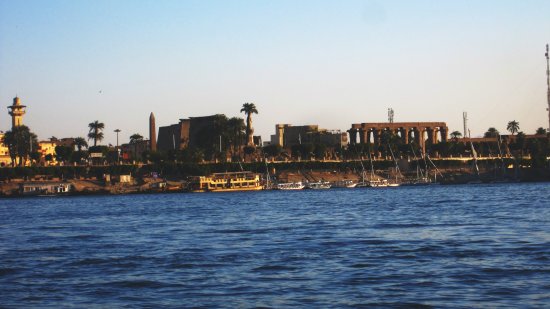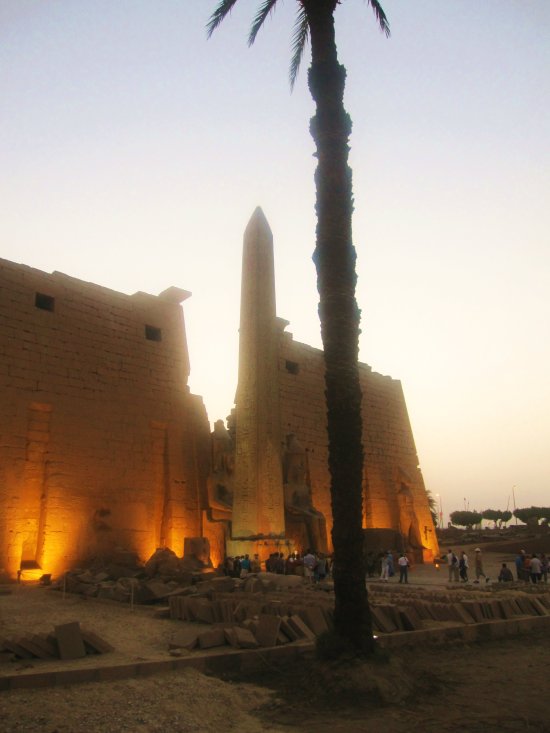In the winter of 2010/2011 I lived and worked in Hurghada in Egypt as a tour guide. I had the most amazing experience working there, with the privilege of getting to know the country and its history – and to be the presenter of that history to hundreds of wide-eyed tourists.
My time in Egypt was sadly cut short because, as some of you might remember, January 2011 was the month the revolution began and president Hosni Mobarak was overthrown by the military. Obviously, the situation in Egypt and the horrible events of last week are all over the news, and a lot of attention is being focused on the chaos and the negative state of it all.
That’s not what we do over here at the Happy Camper Project!
I study International Politics, so I get to dip my toes into the “discuss, critique and analyse!” pool enough as it is. This blog and the love letters I write is about positivity and joy. So I’d like to take a moment and celebrate some of the amazing things I, personally, associate with Egypt.
What better way to do that than to take you all with me to the magical city of Luxor…
——————————————-
Luxor is a city in southern Egypt and is often referred to as “the world’s largest open-air museum”. In ancient Egypt, the city was called Thebes and it was the seat of the king of Upper Egypt. Ancient Egypt consisted of two kingdoms; Upper Egypt (south) and Lower Egypt (north), until king Narmer united the kingdoms and claimed the thrown to the whole shebang around 3000 B.C.
A fascinating thing about ancient Egypt is that they believed that the Nile separated life from death. Once you died, you would have to cross the Nile in a boat from the East Bank to the West Bank, to your final resting place. That’s why everything to do with life is located on the East Bank (as in worship temples), and everything associated with death is located on the West bank (graves, temples of death etc). The 3 great pyramids, which of course are graves, are located on the Giza plateau in Cairo – on the West Bank of the Nile. The city itself – which represents life – is on the East Bank.
Here are some of the must-sees in today’s Luxor:
Karnak Temple
Karnak is the largest temple complex in the whole world. It’s a beautiful and awe-inspiring collection of temples, statues, pillars, obelisks, chapels, and other buildings, and I’ve spent a lot of time over-enthusiastically guiding tourists through this place.
+ True story: when French excavators came to the Karnak temple in the early 1900s, they wondered, “Hmm. This has been covered by desert for the past thousands of years. How do we get rid of the sand? It’s going to take us decades.” One smart-ass came up with an idea: they would break the barriers of the Nile and let the flooding water do the job. Uh….. really? That was your genius plan? The water did rush in (you can still see the marks in the entrance from how far up the water reached), cleaned out the sand – and also cleaned off all the ancient colouring used in the unique, intricate hieroglyphs…. Noooooo! Lost forever!
I hope that smart-ass got fired.
Ramses II
Hatshepsut’s obelisk, the second largest in the world (after the Washington Monument)
Luxor Temple
This is another huge temple on the east bank of Luxor; an absolutely gorgeous temple of worship.
*Crap, I forgot all of my funny anecdotes about Luxor Temple… Skip to pictures.
Mortuary temple of Hatshepsut
Hatshepsut was one of the most fierce and fascinating queens of ancient Egypt. She is in fact one of the most successful pharaohs overall, and her reign longer than any another woman in an Egyptian dynasty. Hatshepsut is thought to be the world’s first botanic, and the first ever to travel the seas to just explore rather than conquer or fight wars.
Over at the West Bank where the dead lie, we find her mortuary temple which is dedicated to the god Amon-Ra and is one of the most magnificent remaining monuments of Ancient Egypt.
Valley of the Kings
I still get chills thinking about this place…
Just to give you the basics: in the Old Kingdom the pharaohs liked to build pyramids as their final resting place, thinking “the closer to the sun (Amon-Ra), the better.”
Turns out pyramids are really easy to spot for tomb robbers. You can’t expect to live happily in the afterlife if someone has stolen all the gold in your tomb, now can you? So in the New Kingdom, the pharaohs figured out that it was best to hide their burial chambers a little better. And so the Valley of the Kings was built, one grave at a time. They dug waaaayyy down into the ground and decorated the walls with stunning hieroglyphs, and filled the whole thing up with gold. It was believed that everything that you were buried with, you would take with you on the boat over to the afterlife, and kings needed to bring all their gold, of course…. Way more practical than clothes and shoes.
Can you imagine the period of time at the turn of the 20th century when European archeologists starting discovering these graves? We’re talking more gold in one single grave than a small country can ever hope to spend in a lifetime. The most famous grave in the Valley of the Kings is the one most recently excavated: Tutankhamon, which was discovered in 1922 by Howard Carter. They’re still digging around in the area, though, and new chambers in the valley was discovered in 2005 and in 2008.
People – this place is so majestic and so goose-bump inducing. Going down into these graves with the most amazing hieroglyphs and paintings, and finding a sarcophagus… knowing that a mummy has been in there for thousands of years… and here we are studying it. It is the weirdest feeling. I’m in awe of this place.
Cameras are prohibited in the Valley of the Kings, so I don’t have any pictures myself. But here are a couple I found laying around on the Internet for you to take a look 😉
The Nile
…and of course, lastly, the Nile.
The Winter Palace Hotel, where Agatha Christie stayed when she wrote 1937’s Death on the Nile.
What’s your favorite photo from Luxor? Have you ever been there, and if so, what monument did you enjoy the most?
Photo credit valley of the kings
Photo credit Seti tomb illustration
Photo credit burial chamber




















